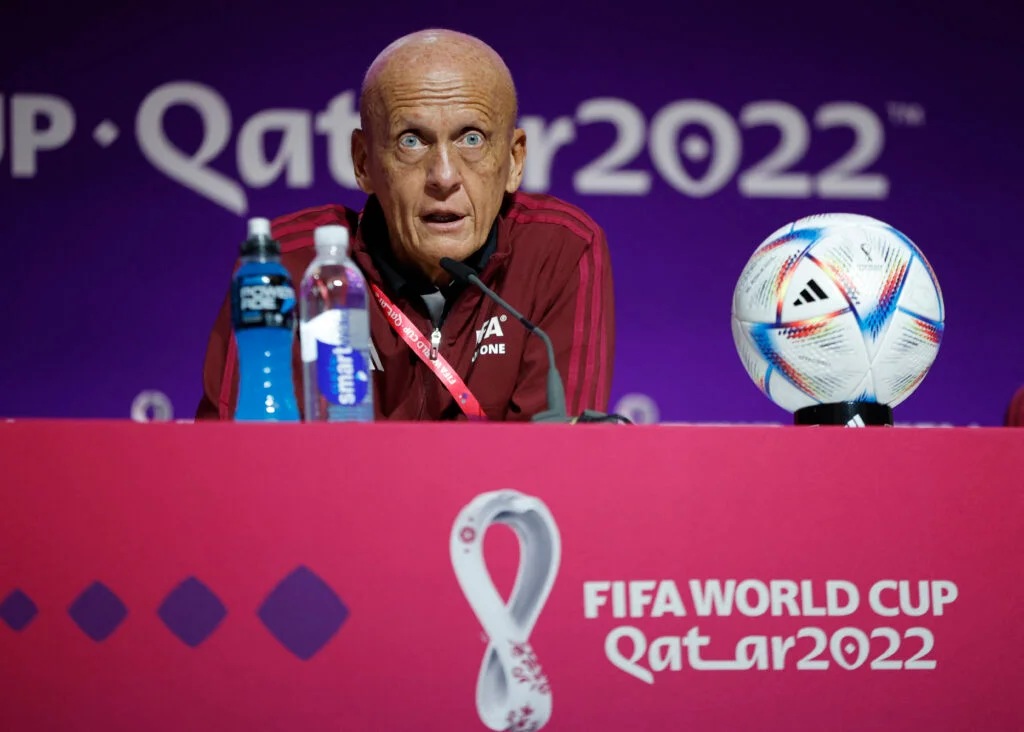The unusual amount of stoppage time has shocked and confused many football fans around the world.
A total of 10 minutes of injury time were added during the opener between tournament hosts Qatar and Ecuador.
Then, on Monday, a whopping 29 minutes were added during England’s 6-2 win over Iran – mainly due to an injuries sustained by goalkeeper Alireza Beiranvand and defender Harry Maguire, plus a lengthy VAR check.
Fourteen minutes were then added during Senegal 0-2 Netherlands.
And 16 minutes were added during United States 1-1 Wales in Monday’s third and final fixture.
These games included the four single halves with the most stoppage time on record in a single World Cup game (since 1966).
So, the big question is: why is it happening at the Qatar World Cup?
Per Goal, Collina told ESPN: “We told everybody to not be surprised if they see the fourth official raising the electronic board with a big number on it, six, seven or eight minutes. If you want more active time, we need to be ready to see this kind of additional time given.
“Think of a match with three goals scored. A celebration normally takes one, one and a half minutes, so with three goals scored, you lose five or six minutes.
“What we want to do is accurately calculate the added time at the end of each half.
“I am not talking about VAR intervention, this is something which is different and calculated by the Video Assistant Referee in a very precise way.”
Expect to see more long halves at Qatar World Cup
Much has been made about time-wasting in football, especially in recent years, and the current rules being applied in Qatar ensure there is more time with the ball actually being in play.
It’s fair to assume that we’ll continue to see a lot more time added on at the end of games throughout the tournament.
England v Iran first half (14:08 minutes)
England v Iran second half (13:08)
USA v Wales second half (10:34)
Senegal v Netherlands second half (10:03)
Ex- CAF Media Expert. An expert on African football with over 15 years experience ,always with an ear to the ground with indepth knowledge of the game. I have worked for top publications including 7 years at www.supersport.com until i founded www.soka25east.com to quench the thirst of football lovers across the continent. I have trained young upcoming journalists who are now a voice in African football.I have covered World Cup,AFCON,CHAN,Champions League,Confederations Cup,Cecafa,Cosafa,Wafu and many other football tournaments across the World. Founder Football Africa Arena(FAA),Founder www.afrisportdigital.com



CAF Confederation Cup
Simba book final spot in CAF Confederation cup
Must See
-


AFRICA
/ 5 years agoSierra Leone FA President Isha Johansen endorses Patrice Motsepe for CAF President
Sierra Leone FA President who also doubles up as CAF Executive Council member Madam...
-


Football
/ 5 years agoIT JUST CAN NOT BE – AN AFRICA FULL OF MORONS?
By John De Mathews, There is an eerie silence around Africa, and it is...














